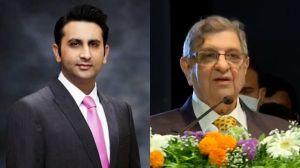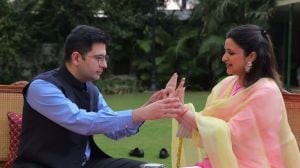Shinmin.Bali@expressindia.com
Tata Global Beverages (TGB) recently rolled out an iteration of its memorable Jaago Re campaign that was first launched in 2008, addressing political and corruption issues back then. The newest campaign in the cause marketing initiative has the tagline, Alarm Bajne se Pehle Jaago Re, and is all about preemption and prevention. The campaign looks to encourage people to stop issues from taking place rather than reacting to them.
Jaago Re 2.0 has been conceptualised by Mullen Lintas. Amer Jaleel, chairman and CCO at the agency says, “Jaago Re has led the conversation on ‘brand activism’ and sparked the wave for not only other brands to participate, but also inspired the youth to be part of the change this country has seen in the past decade.” Thanks to social media, there seems to be a lot of outrage, opinions and even solutions arising, but all of these come quite late — when there is a tragedy or an incident. “This insight led us to realise that the second edition of Jaago Re needed to be at the cutting edge of this new consciousness,” he adds.
Nine years have passed since the first series and the new campaign needed to be a reflection of evolved consumer preferences. “In terms of activism, we have moved the needle. Over the last nine years, because of Jaago Re and other campaigns, people have started talking about issues,” says Sushant Dash, regional president — India, Tata Global Beverages. “Until now, we had taken the campaign from empathy to activism. With Jaago Re 2.0, we are looking at pre-activism where we are saying, activism is good but what is better is preventing the event from happening.”
TGB maintains that for the brand, it has always been about behaviour, having a conversation and creating awareness, and that the 2.0 version is a result of that. For the first eight to 10 weeks, the brand will concentrate on establishing what ‘pre-activism’ means and seed it in conversations on social media. Post this, TGB plans to walk the talk by having people participate and get them more involved in the campaign. In phase three, the brand itself will participate in pre-activism. The timeline for this is roughly 18 months.
For TGB, at the end of the day, it is ultimately about the brand. Apart from the social objective, it is looking to create an emotional relationship with consumers with its four brands. This will in turn stretch media monies more, creating an affinity and love that sells more products, provides Dash. The marketing objective is to improve the share of mind and the brand’s thought leadership among the youth.
Is the new attempt a bold next step or is it a tad much? Nalin Khanna, group MD and CEO of brand consultancy Vertebrand believes that Jaago Re 2.0 is an example of a brand taking its communication to a very high level. Not only the film in itself, but also the issues highlighted in it are dark, hard-hitting and a little on the edge. He notes that the campaign/film has the potential to go viral. Having said that, Khanna notes that coming from the Tata stable, the film is a little bold given that Tata as a brand is rarely seen as aggressive in its communication.
Samit Sinha, brand expert and managing partner at Alchemist Brand Consulting shares that probably given how long ago the Jaago Re campaign entered public domain, it was due for a refresh.
“The new one does not look like a change in direction in terms of communication but for the impact of the campaign to be maintained, the ideas need a refresh,” he says. “What TGB seems to be doing here is to create a greater sense of urgency, which is the key differentiation from the previous campaigns. It is not just about waking up, but waking up now!”
The executional elements were perhaps influenced by the fact that TGB now wants to reach out to a younger audience and realises that in the internet world one perhaps needs to be slightly shocking and have edgier execution. “To create that sense of urgency it probably has to be in your face,” Sinha sums up.









